Minds On
Exploring
- We use money for many reasons, including grocery shopping. Think about the following questions:
- Have you ever been to the grocery store with your family?
- How do you know how much something costs?
- Where do you pay for the things you are buying?
Record your ideas in an audio recording, on paper, or on a computer.
Let's explore the different coins and bank notes that we use.
Canadian coins
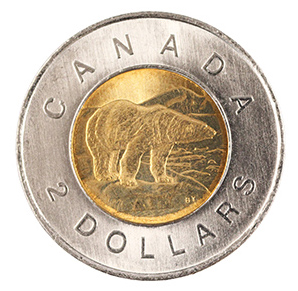
Press the ‘Answer’ button to know more.
Name: Toonie
Worth: 2 dollars
Image: Polar bear on one side
Colour: Silver and gold

Press the ‘Answer’ button to know more.
Name: Loonie
Worth: 1 dollar
Image: Loon on one side
Colour: Gold
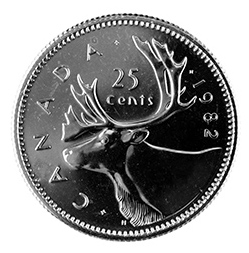
Press the ‘Answer’ button to know more.
Name: Quarter
Worth: 25 cents
Image: Caribou on one side
Colour: Silver
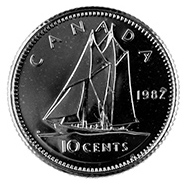
Press the ‘Answer’ button to know more.
Name: Dime
Worth: 10 cents
Image: Bluenose schooner on one side
Colour: Silver
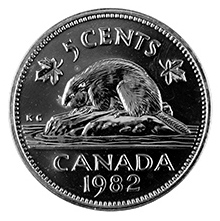
Press the ‘Answer’ button to know more.
Name: Nickel
Worth: 5 cents
Image: Beaver on one side
Colour: Silver
Canadian bills
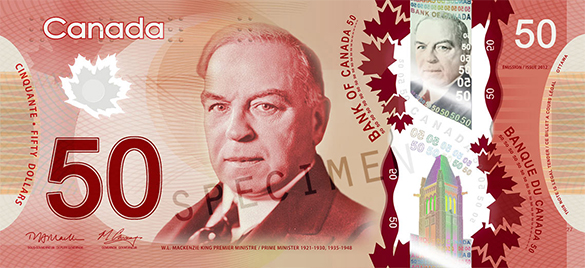
Press the ‘Answer’ button to know more.
Name: 50 dollar bill
Worth: 50 dollars
Image: William Lyon Mackenzie King on one side and CCGS Amundsen, an icebreaker ship used in the Canadian Arctic, on the reverse.
Colour: Red
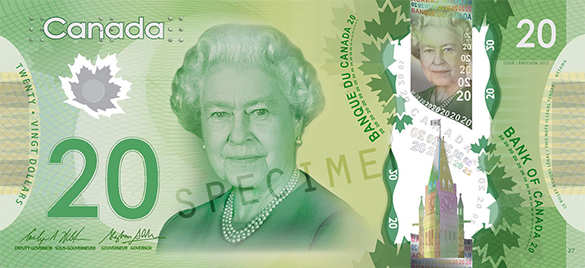
Press the ‘Answer’ button to know more.
Name: 20 dollar bill
Worth: 20 dollars
Image: Queen Elizabeth II on one side and the Canadian National Vimy Memorial, a monument in France, on the reverse.
Colour: Green
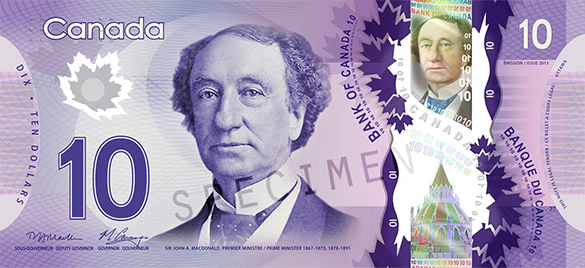
Press the ‘Answer’ button to know more.
Name: 10 dollar bill
Worth: 10 dollars
Image: Viola Desmond, a successful Black Nova Scotian businesswoman and civil rights activist. The Canadian Museum for Human Rights, located in Winnipeg, Manitoba, on the reverse. This note has a vertical design.
Colour: Purple
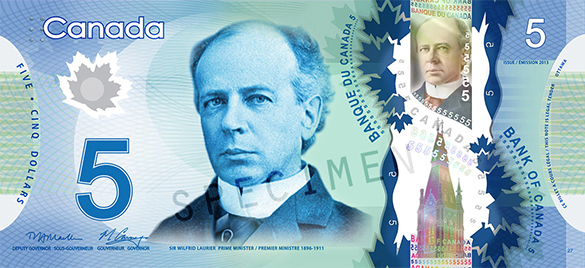
Press the ‘Answer’ button to know more.
Name: 5 dollar bill
Worth: 5 dollars
Image: Wilfrid Laurier, the first French-Canadian to lead Canada on one side and the Canadarm, a robotic arm designed in Canada and used on NASA missions between 1981 and 2011, on the reverse.
Colour: Blue
Action
Applying skills
Grocery shopping
Now that we have explored the different coins and bank notes used in Canada, let’s use what we know to shop for some food items. The following food items are:
- A peach: 40¢
- An apple: 25¢
- Bag of chips: 60¢
- Carton of milk: 50¢
- Cookie: 45¢
- Chocolate bar: 30¢
- A banana: 5¢
- Carrot sticks: 15¢
Let's use what you’ve learned in the Minds On to recognize the coins and bank notes we could use.
Grocery items with price tags; peach for 40 cents, apple for 25 cents, bag of chips for 60 cents, milk carton for 50 cents, cookie for 45 cents, chocolate bar for 30 cents, banana for 5 cents, and carrot for 15 cents.
Student Success
Think-Pair-Share
It's your turn!
You have 50 cents to spend on some food items. What combination of items will you choose to buy? You can create your list using paper, a computer application, a descriptive audio clip, speech-to-text software, or a method of your choice to show your combinations.
Note to teachers: See your teacher guide for collaboration tools, ideas and suggestions.
Consolidation
Let’s match!
Match the following Canadian coins to the correct name and amount. For each coin, select the matching name.
Money facts
Why might it be important to learn about coins and bills?
Think about 1 to 2 facts you would like to share about Canadian coins and bills.
Record your thoughts using a method of your choice and share with a partner if possible.
Reflection
How do you feel about what you have learned in this activity? Which of the next four sentences best matches how you are feeling about your learning? Press the button that is beside this sentence.
I feel...
Now, record your ideas about your feelings using a voice recorder, speech-to-text, or writing tool.